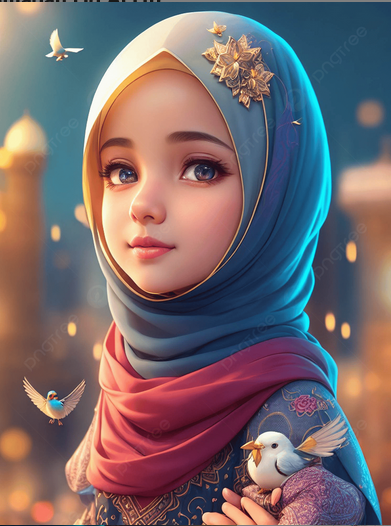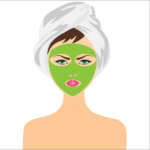Are you ready to explore the vibrant world of hijabhoojup? This unique and stylish form of headwear has transcended borders, cultures, and generations. It’s more than just a piece of fabric; it’s an expression of identity, beauty, and empowerment. Whether you’re new to hijabhoojup or looking to expand your knowledge about its significance and styles, this guide is tailored for you. Dive in as we unravel the history behind it, discover various styles, learn how to wear one like a pro, and debunk common misconceptions. Let’s celebrate the elegance that is hijabhoojup together!
What is Hijabhoojup?
Hijabhoojup is a captivating blend of tradition and modernity, representing a distinct style of head covering. This term reflects not just the garment itself but also the cultural practices surrounding its use.
At its core, hijabhoojup serves as a symbol of modesty for many women around the globe. It allows them to express their faith while embracing personal style. The fabric varies in texture and design, offering endless possibilities for creativity.
More than just an accessory, hijabhoojup carries individual stories and experiences. Each wearer brings her own flair, making it a canvas for self-expression that transcends mere functionality.
From vibrant colors to intricate patterns, hijabhoojup celebrates diversity within unity while fostering connections among women from different backgrounds.
History and Cultural Significance of Hijabhoojup
The hijabhoojup has deep roots in history, often tied to various cultural narratives. It is believed that the tradition of wearing a headscarf traces back centuries, with origins in both religious and social practices.
In many cultures, it symbolizes modesty and respect. The hijabhoojup serves as a statement of identity for women across diverse communities. Its significance varies; for some, it’s an expression of faith, while for others, it’s about personal choice.
Throughout history, this garment has transcended mere fabric. It reflects resilience during times of political turmoil and societal changes. Women have used it to express their individuality while adhering to cultural values.
As societies evolve, so does the perception of hijabhoojup. Today’s wearers blend traditional styles with modern fashion trends—creating a unique fusion that honors its past yet embraces contemporary aesthetics.
Types of Hijabhoojup Styles
Hijabhoojup styles vary widely, offering something for everyone. The classic wrap is a staple in many wardrobes. It’s versatile and can be paired with casual or formal attire.
For those who love a bit of flair, the turban style adds an edgy twist. This look often incorporates unique fabrics and patterns, allowing for personal expression.
The layered hijabhoojup is another popular option. With its multiple layers, it creates depth and texture. Perfect for adding volume without compromising elegance.
Some prefer the modern shawl-style hijabhoojup, which drapes beautifully over shoulders. This style exudes sophistication while remaining practical.
There are embellished options featuring beads or embroidery that elevate any outfit instantly. These decorative touches make the hijabhoojup not just a piece of clothing but a statement accessory as well.
How to Wear a Hijabhoojup
Wearing a hijabhoojup can be both an art and a personal expression. Start by selecting the right fabric that feels comfortable against your skin. Lightweight materials like chiffon or cotton work well for everyday wear.
Next, drape the scarf over your head, letting one side hang longer than the other. This adds dimension to your look. Tuck in any loose ends to keep everything secure.
For added flair, consider using decorative pins or brooches at the shoulder or near the cheekbone. They not only help hold the hijabhoojup in place but also serve as stylish accessories.
Practice different wraps until you find a style that complements your face shape and outfit. Don’t shy away from experimenting with colors; vibrant hues can uplift your mood while expressing individuality.
Remember, confidence is key when wearing a hijabhoojup. Embrace this beautiful form of self-expression fully!
Styling Tips for Different Occasions
When it comes to styling hijabhoojup, the occasion plays a crucial role. For casual outings, opt for lightweight fabrics in playful colors or patterns. Pair your hijab with a simple top and jeans for an effortless look.
For formal events, consider luxurious materials like silk or chiffon. Choose elegant colors such as deep emerald or classic black. Draping techniques can elevate your style; try layering with a stylish brooch.
At work, keep it professional yet chic. A structured in subtle hues complements tailored outfits beautifully. Experiment with textures but avoid overly bold designs to maintain that polished appearance.
On festive occasions, go all out! Embrace vibrant colors and intricate embellishments that reflect joy and celebration. Accessorize thoughtfully—consider statement earrings or delicate necklaces to complete the ensemble without overwhelming it.
Misconceptions and Controversies Surrounding Hijabhoojup
Misunderstandings about hijabhoojup often stem from cultural differences. Many people view it solely as a symbol of oppression, ignoring its diverse meanings across communities.
Some believe that wearing a hijab limits personal freedom. In reality, countless individuals embrace it as an expression of identity and spirituality. For them, it’s empowering rather than restrictive.
Controversies frequently arise in media portrayals. Stereotypes can perpetuate negative images, failing to recognize the beauty and variety within hijab styles.
Additionally, discussions around hijabhoojup can lead to heated debates over women’s rights versus religious practices. These conversations sometimes gloss over the personal choices women make regarding their attire.
Understanding requires open dialogue and respect for different perspectives on this significant garment. Each person’s experience with hijabhoojup is unique and deserves acknowledgment without judgment or bias.
Conclusion
The beauty of hijabhoojup lies in its rich cultural tapestry and the empowerment it offers to those who wear it. This traditional headscarf is much more than a piece of fabric; it’s an expression of identity, belief, and individuality. The diversity of styles allows women to embrace their personal aesthetics while adhering to their values.
Wearing hijabhoojup can foster a sense of community among women who share similar beliefs. It promotes solidarity and encourages dialogue about faith, fashion, and culture. Each twist, fold, or drape tells a story—a connection between generations that transcends geographical boundaries.
Moreover, with increasing global awareness around different cultures and practices, the appreciation for hijabhoojup has grown significantly. It’s seen on runways and social media platforms alike as not just an accessory but a statement piece that challenges stereotypes.
Embracing hijabhoojup empowers individuals by allowing them to reclaim narratives often dictated by society. Women wearing this elegant garment inspire others through their strength and grace while challenging misconceptions surrounding modesty.
In every wrap lies confidence; in every color shines creativity. The journey into understanding hijabhoojup is one filled with respect for its traditions while celebrating modern interpretations. As diverse as the women who wear it, hijabhoojup continues to be a source of pride—reminding us all that beauty exists in many forms.


